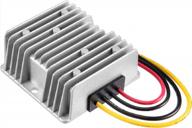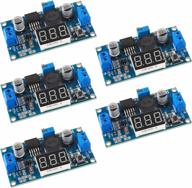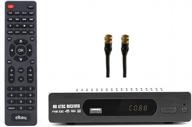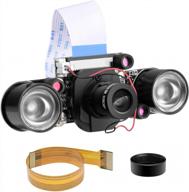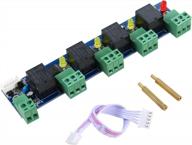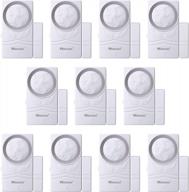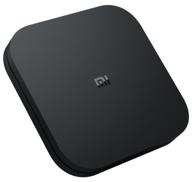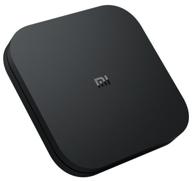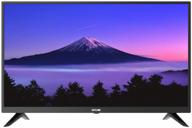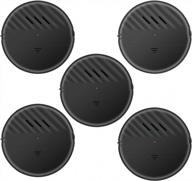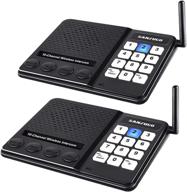Another interesting products
The Rise of Home Theaters
Home theaters have come a long way in recent years. What was once reserved for only the most hardcore enthusiasts has now become attainable for the average consumer. The global home theater market is expected to reach $25 billion by 2025, fueled by declining costs and advancing technology.
Top products in 🎬 Home Theater Systems
Growing Demand
There are several factors driving the growth in home theaters:
- Falling prices - Big screen TVs and surround sound systems are more affordable than ever. You can build a decent starter system for under $1000.
- Smaller footprints - Speakers, receivers and subwoofers are getting smaller while maintaining quality.
- Streaming content - Services like Netflix and Amazon Prime provide a huge library of movies and shows to watch.
- Immersive audio - Formats like Dolby Atmos and DTS:X create lifelike, multidimensional sound.
As it gets cheaper and easier to replicate a theater experience at home, more consumers are taking the plunge.
Latest Technology
Several innovations are also driving home theater adoption:
4K and HDR
4K Ultra HD TVs offer four times the resolution of 1080p sets. This leads to sharper, more detailed images. High dynamic range (HDR) provides greater contrast between the lightest and darkest parts of the picture. The combination of 4K and HDR results in images that look incredibly lifelike.
OLED
OLED (organic light emitting diode) is a display technology that provides perfect blacks and incredible contrast since each pixel emits its own light. OLED TVs also have wider viewing angles and faster response times compared to LCDs.
Wireless Speakers
Wireless surround sound systems from Sonos, Bose and others simplify setup by removing the need to run speaker wires. Wireless rear speakers can be placed anywhere in the room.
Voice Control
Using a voice assistant like Alexa or Google Assistant, you can now control your home theater hands-free. Turn the volume up or down, play a movie, switch inputs or turn the system on and off just by speaking.
Technology will continue advancing to make home theaters more immersive. The quality gap with commercial cinemas is narrowing. For many, the convenience of watching films in the comfort of home now outweighs the theater experience.
Choosing the Right Home Theater System
Building a home theater requires carefully selecting the right components to fit your needs and budget. Follow these tips when choosing your system:
Similar products
Determine Your Budget
Home theaters can range from a few hundred dollars for a basic setup to over $100,000 for an extravagant custom installation. Determine how much you're willing to spend upfront. Here are some budget tiers to consider:
- $500 - $1000 - Entry-level system with HTIB or basic components
- $1000 - $2000 - Quality 1080p TV, 5.1 receiver, floor standing speakers
- $2000 - $5000 - Mid-range 4K TV, Atmos receiver, surround speakers
- $5000+ - High-end 4K projector, premium speakers, acoustic treatments
Choose the Right Components
These are the core components of a home theater system:
Receiver/Amplifier
This is the central hub that powers the speakers and processes audio signals. Key features include:
- Wattage - Dictates how loud the system can play
- Channels - 5.1, 7.1, etc. Determines number of speakers
- Video passthrough - 4K, HDR, HDCP 2.2, HDMI 2.0
- Audio formats - Dolby Atmos, DTS:X, etc.
Speakers
For surround sound, you need front left/right, center channel, side surrounds, and subwoofer. Consider power handling, frequency response, sensitivity, and impedance.
Television
You can use a TV or a projector. For TVs, look for 4K resolution, high contrast ratio, HDR support, and low input lag.
Media Player
A media streamer like Roku or Apple TV provides smart TV features and streaming apps.
Room Size and Layout
Factor in the dimensions and seating arrangement of your room when selecting speakers and components. Bigger rooms need more powerful systems. Your installer can help optimize components for your space.
Choosing the right home theater gear takes research and planning. But the payoff is having a system perfectly tailored to your needs that will provide great performance for years to come.
Determining Your Home Theater Budget
Setting a budget is one of the most important steps when planning a home theater system. This determines which components you can afford and the overall performance of the system. Follow these tips when deciding on your budget:
Consider Ongoing Costs
The initial equipment purchase is only part of the total cost. Also factor in:
- Installation fees - $200 to $1000+ for professional installation
- Warranties - Extended warranties can provide peace of mind
- Upkeep - Equipment maintenance and periodic upgrades
- Electricity costs - Larger systems use more power
Determine Usage
How often will you use the home theater? If you'll only watch movies occasionally, invest less. Frequent users may want to allocate more of their budget for better performance and expandability.
Consider Long-Term Goals
Take into account how you see your home theater growing in the future. For example:
- Will you add more rooms or zones?
- Do you plan on upgrading to 4K or Atmos later?
- Will you incorporate smart home devices down the road?
Leave room in your budget to allow for future upgrades and expansion.
Room Size and Layout
Larger rooms typically need more powerful and higher quality gear. Soundproofing and acoustic treatments may also be required, which can add to costs. The room layout also affects speaker choice and placement.
Create Tiers
Determine multiple budget tiers, from entry-level to dream system. This helps set expectations and gives you room to modify if needed. For example:
- Good - $2,000 total budget
- Better - $5,000 budget
- Best - $10,000+ budget
Remember It's a Process
You don't need to buy everything at once. Spread out costs over time by starting with a basic system and upgrading components gradually. Determine your initial budget, but leave room to grow your system over the years.
Setting a realistic home theater budget takes analysis and planning. But it ensures you get the best system possible for your money both now and into the future.
Choosing the Right Home Theater Components
Selecting the optimal components is critical for building a home theater system tailored to your needs. Here are some tips on choosing key components:
Receiver/Amplifier
The receiver is the central hub of your system. Key considerations include:
- Channels: A 5.1 receiver supports basic surround sound. 7.1 adds rear surrounds. Go for at least 7 channels for an immersive experience.
- Audio Formats: Make sure the receiver supports latest formats like Dolby Atmos and DTS:X for multi-dimensional sound.
- Video Passthrough: HDMI 2.0 and HDCP 2.2 allows you to pass 4K HDR signal from media players.
- Connectivity: Ensure adequate HDMI and audio inputs for your sources.
Speakers
Quality speakers provide the foundation for great sound. Focus on:
- Sensitivity: Measures how loud the speakers play with a certain watt input. Higher is better.
- Frequency response: The range of bass and treble the speaker can reproduce. Wider is generally better.
- Impedance: Speakers should have impedance matching the receiver to get optimal power transfer.
Television
Consider a 4K HDR TV from LG, Sony or Samsung. Key features:
- High contrast ratio: Deeper blacks and brighter whites. OLED TVs excel here.
- Wide color gamut: Shows more realistic, nuanced colors.
- High refresh rate: Smoother motion, better for sports and gaming.
Media Player
Streaming boxes like Roku or Apple TV provide smart TV features and apps. Go for a 4K HDR model if you have a 4K TV.
Projection Screen
Projector setups require a screen. Dimensions should match projector's native resolution. Material affects image quality - matte for brighter rooms, angular for dark theaters.
Choosing components that work together seamlessly is key to home theater success. An experienced installer can help select the right gear for your space and needs.
The Benefits of Amazon Prime for Home Theater Shoppers
Amazon Prime provides a number of useful benefits for those looking to research and buy home theater systems and components. Here are some of the key perks Prime members enjoy when shopping for home theater equipment on Amazon:
Free Shipping
Amazon Prime members get free two-day shipping on millions of eligible items. This means you can get your receivers, speakers, TVs and other home theater gear delivered right to your door in just two days, without having to pay extra for shipping costs. Considering many home theater components are large and heavy items, the shipping savings can really add up.
Free Returns
Amazon offers free and convenient returns on most items for Prime subscribers. This makes it easy to order home theater speakers and components to audition in your home, and return them at no additional cost if they aren't the right fit. Take advantage of this perk to compare different systems first-hand.
Access to Deals
Amazon Prime members get 30-minute early access to Lightning Deals, which offer deep discounts on select products for a short time. You can find great deals on TVs, media players, speakers and other home theater gear. Prime Day also offers special savings exclusively for Prime members.
Extensive Reviews
Amazon has one of the largest collections of customer reviews on the web. You can tap into thousands of in-depth critiques of specific home theater systems and components to help guide your buying decisions. Compare what actual owners have to say.
Overall, an Amazon Prime membership provides useful benefits that can simplify researching, buying and setting up your home theater. Take advantage of these perks to save on shipping, score deals and make returns hassle-free.
What Are The Key Elements Of A Home Theater System?
The key elements of a home theater system are:
- Accurate, high-definition sound: Arguably the most important element in a home theater system, acoustics can make or break the experience. A good sound system should be able to take in the subtleties that you might otherwise miss in a typical home viewing. It is recommended to invest in a Dolby Atmos surround sound system with at least a five-speaker system, known as a 5.1 setup.
- Superior image quality: A good TV or projector and screen are principal to the experience. A typical home theater system includes a TV or projector and screen. It is important to have a quality screen and sound system to enjoy the full effect of the home theater experience.
- Connection components: HDMI cables are essential to hook up all your components and streaming devices. It is recommended not to be cheap when investing in these cables.
- Lighting: Lighting is another important aspect of home theater design. To get the most out of the home theater experience, it is important to control the amount of light in the room. This can be done with blackout curtains or motorized window blinds. You can also have lighting on dimmers and special floor lighting just like in commercial movie theaters.
- Soundproofing: Soundproofing is important to prevent sound from escaping the room and disturbing others in the house. It is recommended to work with a professional company that stays on top of the latest in home and product technology.
- Customization: A home theater system can be pre-packaged or made up of separate components. A pre-packaged home theater system is very easy to set up and everything matches. A home theater system made up of separate components is more customizable with respect to sound and design aesthetics.
What Are The Different Types Of Screens For A Home Theater System?
There are different types of screens for a home theater system, and the most common ones are projector screens. Here are the different types of projector screens for a home theater system:
- 16:9 projector screens: These are the most common type for home theaters as they are optimized for widescreen viewing, which is often used in films.
- 16:10 projector screens: These are slightly taller on the sides and are most commonly used for PC projection in classrooms or businesses.
- 4:3 projector screens: These are similar to the ratio used on more televisions, so this could be an option if you will be watching TV shows in your home theater more often than movies.
- High Contrast Gray screens: These screens are designed to enhance contrast and black levels, making them ideal for rooms with ambient light.
- High gain screens: These screens are designed to reflect more light back to the viewer, making them ideal for rooms with low ambient light.
- Rear projection screens: These screens are designed to be viewed from behind, making them ideal for situations where the projector needs to be hidden from view.
It is important to choose the right size and material for your projector screen, as this can have an effect on the quality of the image from the projector.







